Botanical Illustrations of Mosses
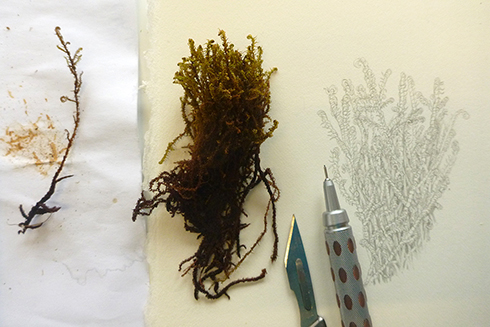
Sometimes a botanical illustration commission appears that calls for something totally new. In all my days of natural history illustration, I’d never been asked to do a whole lot of mosses before.
The closest I’ve been was illustrating two mosses for the FSC Churchyard Plants leaflet
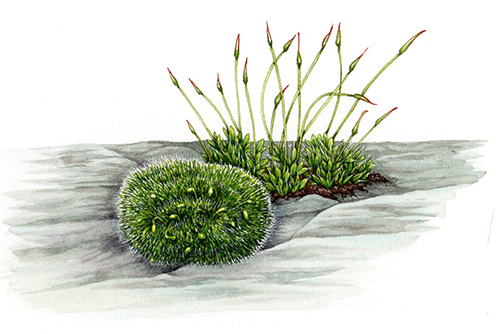
Moss: Grimmia pulvinata and Tortula muralis
The commission came from the Field Studies Council’s publications department who I’ve worked with before (see my blogs on Churchyard plants and edible plants).
When confronted with a list of 15 bryophyte species, the first thing to do is to gather reference. FSC supply a species list along with important diagnostic features, but I need more than that to work with.
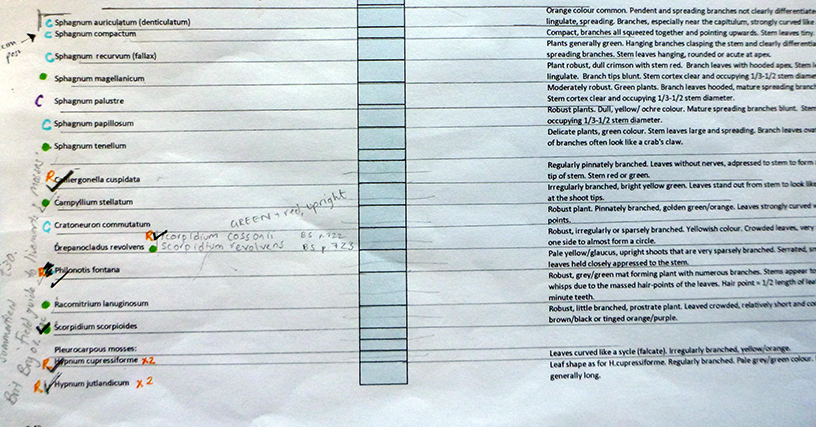
Getting reference for mosses illustrations
FSC Species and diagnostics chart
Luckily, there’s a magnificent website for anyone keen on lichen, liverworts and mosses ; namely the British Bryological Society. Not only do they give lots of information, photos, and a reading list, they also have the entire “BBS Mosses & Liverworts of Great Britain & Ireland – A Field Guide” (currently out of print) available to download. I worked the second hand shops of Hay-on-Wye and soon had my reference books sorted.
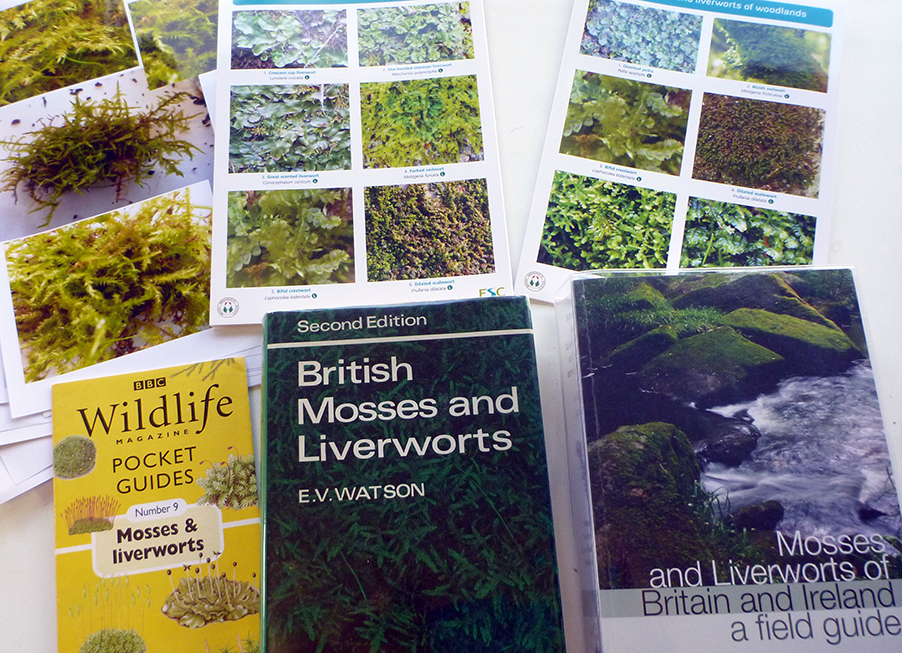
Moss Reference books
This is not enough though; for a total beginner with mosses. I had to get my hands on specimens. Luckily, through contacts at Radnorshire Wildlife Trust and the Hereford Botanical Art Group, I was able to approach Jonathan Sleath and Ray Woods. Both of these eminent experts had plenty of other tasks. Extremely generously, they went out into the field and collected me bags of lovely (and correctly identified!) moss.
I’m keeping all the specimens, and taking a little of each for long-term storage in tupperware.
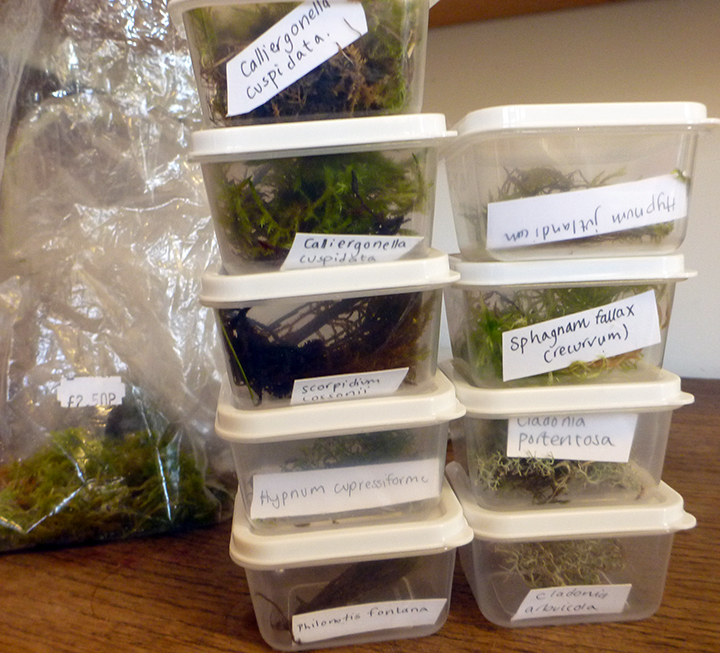
Moss storage
Without this resource I wouldn’t have been able to begin drawing up these divergent and beautiful plants.
Some species weren’t immediately available; Ray lent me his herbarium specimens, dried in labelled envelopes. It’s easy to reconstitute these by adding a little water; after use you dry them out and return them to their envelopes.
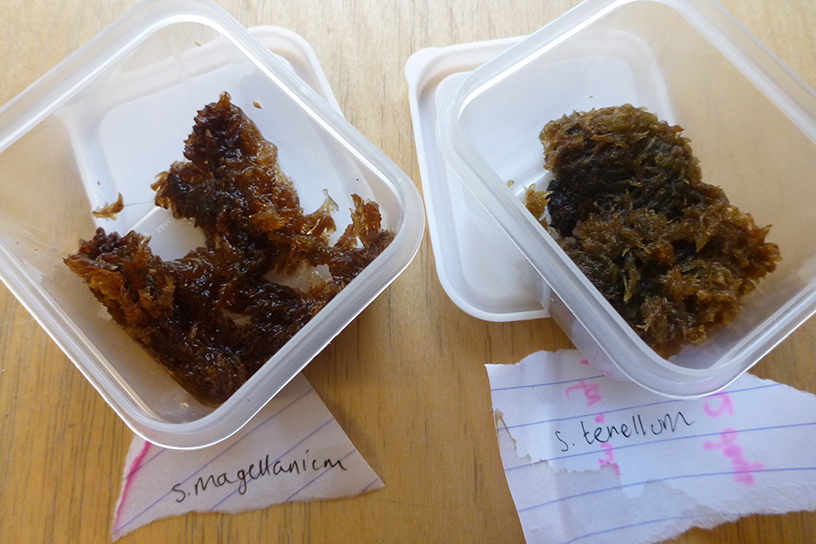
Rehydrated Sphagnum magellicum and Sphagnum tenellum mosses. (Worth noting that when fresh, S. magellicum is the colour of red-wine, S. tenellum is a bright green.)
With my live material, list, and moss bibles sorted, I could begin drawing.
Illustrating the mosses
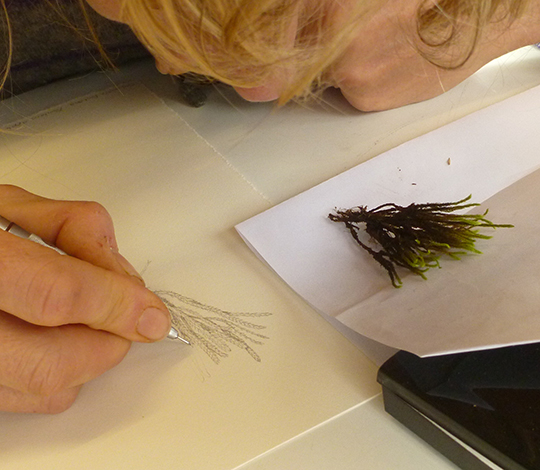
Illustrating Scorpidium cossonii
I use Fabriano Artistico hot press paper and a mechanical pencil (Pentel P205 with HB lead).
The immediate problem was that mosses are so tiny I can’t see them. I’m incredibly short-sighted, so took out my contact lenses. Result! By drawing nose-to-moss, I could get all the detail I needed, especially if I used a torch to light up the intricate strands making up the thicket of moss from which individual shoots emerge.
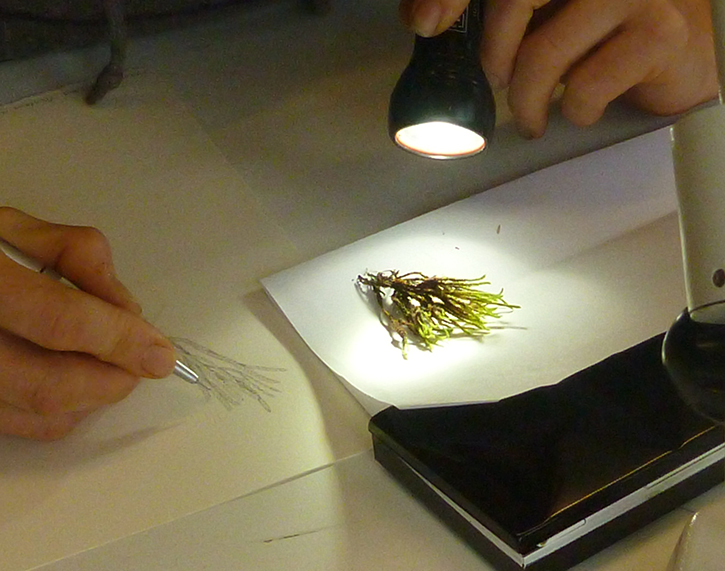
Using a torch and no contact lenses to get up close to Scorpidium cossonii
Each illustration requires a habit sketch (what the plant looks like in the wild), an individual shoot of moss showing branching and typical growth pattern, and a close up of one leaf. The latter meant my lovely dissecting microscope has been extremely busy over the last few weeks! (Sorry about the odd angle of the next photo.)
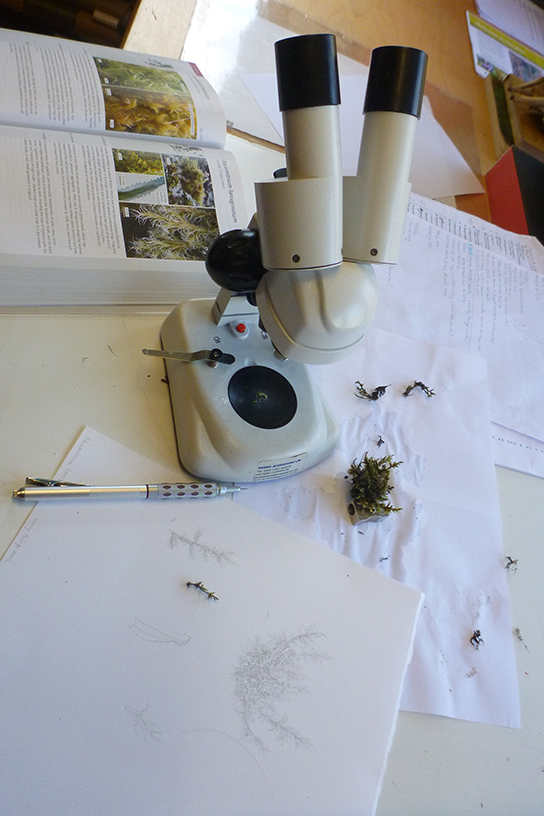
Using a dissecting microscope to see individual leaves of Racomitrium lanuginosum
Once completed, I take innumerable photos of the moss habit and individual shoot I’ve just illustrated. This should help with colour-matching once I get to work on the watercolour finals, although more than ever I notice the discrepancy between a real living specimen and a printed photo of the same thing.
Scorpidium scorpoides

Illustration and specimen of Scorpidium scorpoides
Each drawing takes about 6 hours; far longer than my normal pencil roughs. I am also worried; in order to know where I am in the moss clump I’ve had to execute tonal studies. How on earth will these be transformed into full watercolour once I get the go-ahead? We’ll have to wait and see.
Hypnum jutlandicum
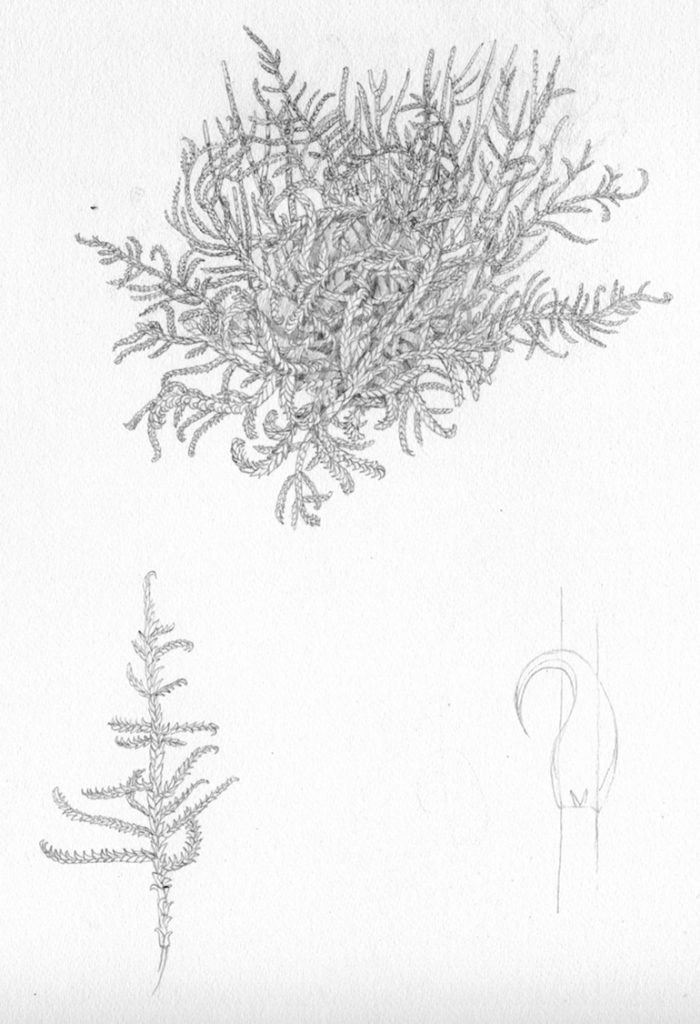
Hypnum jutlandicum Heath Plait moss (rough)
This moss, Hypnum jutlandicum, has evaded me. This is my third attempt to capture the vital characteristics that make the plant “feel” like H. jutlandicum. Many thanks are due to Ray who not only gives me support and feedback, but has collected me this moss for me on two separate occasions.
I was surprised but how engrossed and how firmly in love I fell with these mosses; I really enjoyed the enormous challenge of illustrating them.
Scorpidium cossonii

Pencil rough of Scorpidium cossonii alongside specimen, scalpel and Pentel pencil
I have sent off scans of these roughs to FSC, to Ray Woods, and to Jonathan Sleath for feedback. This is, for an illustrator, always a terrifying time. It’s perfectly possible every single moss will need a complete re-draw. Obviously, I really hope not; but I accept that all feedback and comments received will need to be taken on board, alterations are a vital part of the process, and I’m incredibly grateful to FSC, Ray, and Jonathan for taking the time to look and give advice on these pencil roughs.
Sphagnum magellicum
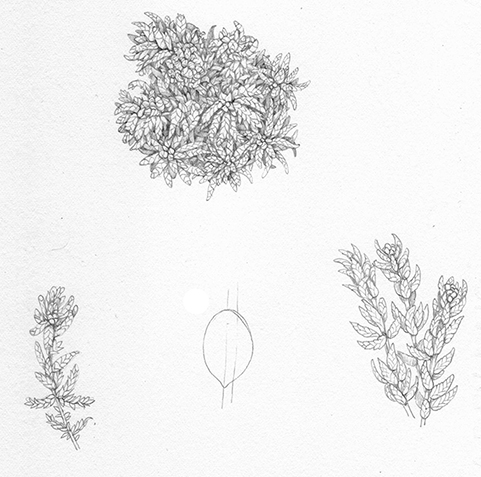
Sphagnum magellinicum Megallanic Bog moss pencil rough
Once I get the feedback, I’ll begin the painstaking process of revising, and then of painting these beautiful lower plants. I just hope I can do them justice!
Racomitrium lanuginosum

Racomitrium lanuginosum Wooly Fringe moss pencil rough


Thank you for posting this blog entry. My fifth graders are drawing moss today in science class, and your blog helped orient them about the purpose and some of the process. We used magnifying glasses, number 2 pencils, and colored pencils. They are drawing on printer paper.
Thank you for sharing your work.
Hey Stacey
That sounds so cool, what a great thing for a teacher to get her class to draw! Im so impressed. Coloured pencil and graphite is a great material choice too, fives them every chance of getting good work from their observations. Glad to be of help, and lucky kids!